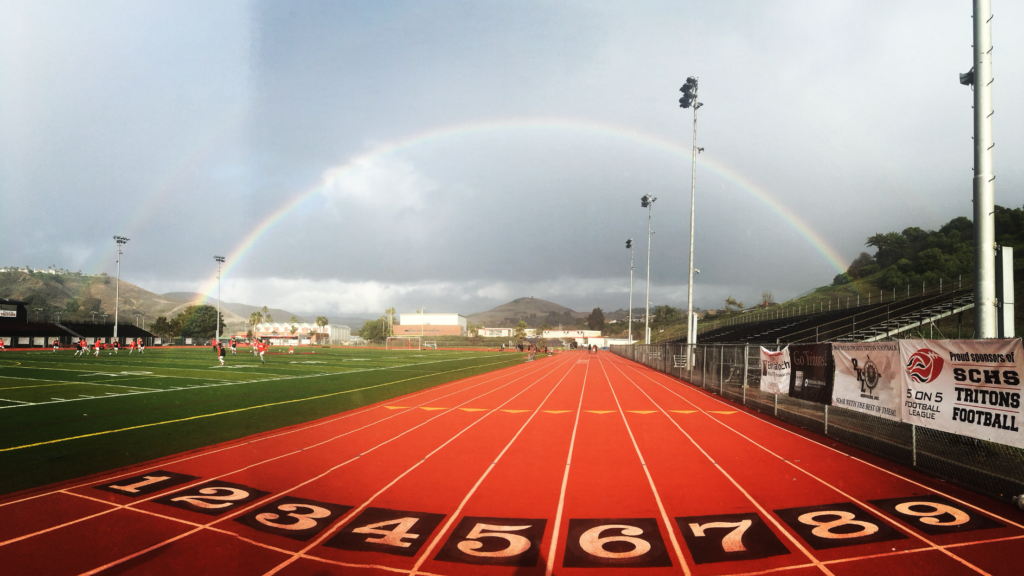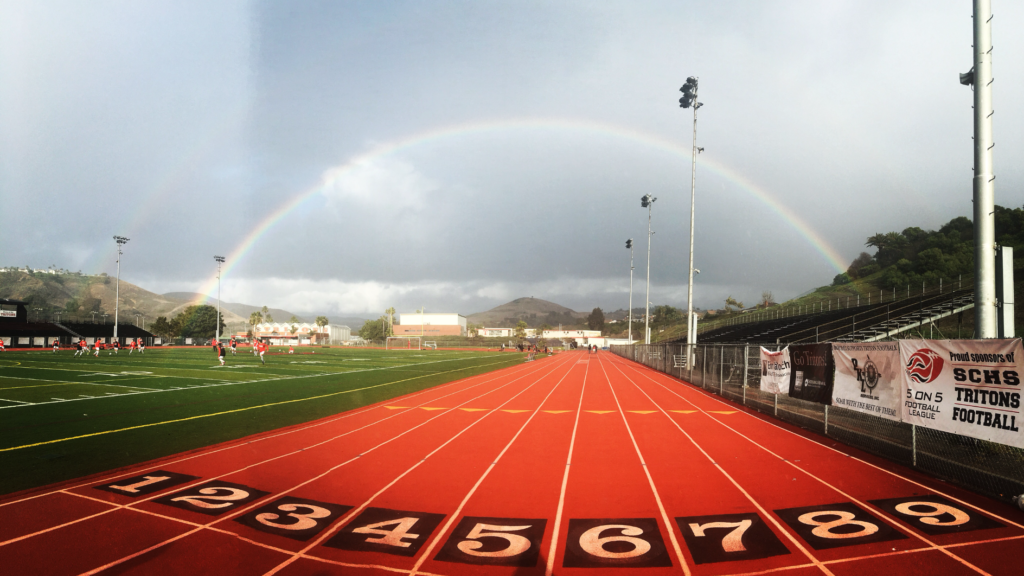
Training for track and field is a very intricate process. Although many may think that to be good at running you just need to run more, but there is much more involved than that.
There is a concept in the training world called periodization.
Periodization just means that there are very specific periods of time where one needs to train in specific ways.
These periods of time require different types training ranging from a focus on strength training, developing a cardio based, technical training for your event, fine tuning for competition, to maintaining your strength and speed during season.
This article will break down the Periodization training for high school and college track athletes to help you know what you should start looking to do to prepare for next season, whether thats is for an incoming high school freshman, or a soon-to-be college freshman.
Many may claim they are “speed trainers,” but you should be aware of the bigger picture so that you or your athlete does not train like a football player, do weight training that added unwanted bulky muscle, burnt out, peak too early, or even get injured.
Oh and just a tip, if you want to be a FAST sprinter,
DO NOT GO RUN CROSS COUNTRY
to “get in shape.”
You can kiss your sprint speed goodbye. I would stick to the following…
Phase 1 : Rest From a Long Season
As the Track and Field season is winding down, many are starting to think ahead for how they can improve their performance for next year’s season.I have a lot of athletes ask me what they should starting doing now to get ahead.
While immediately finishing your season is a time to let your body rest. You may be motivated to get out and keep working now, but be patient, trust your body needs to recover from a very taxing season.
You need ample time to let your body heal from those repetitive stress injuries like shin splints, a strained hamstring, weird hip or foot pain etc.
How long should I Rest after Track Season Before I start Training again?
I would suggest about 3- 4 weeks after your last race.
This doesn’t mean that you have to sit on the couch and watch Netflix all day, but you should really take a break from things like sprinting, jumping, or hurdling for 3 or 4 weeks.
You are welcome to go on a light jog, lift some weights, do some yoga or even general fitness classes at your local gym. The point here is to take the time to let your track star self take a break from all things track.
It is a perfect time to book a physical therapy appointment to check out those weird pains you have been having, or better yet go on vacation!
I would learn to love this time because after those 4 weeks, you will be right back at it.
Phase 2: Summer, Strength Training
This is my absolute favorite part of training for track and field. Proper strength training is the secret to those P.R.’s.
Now I emphasize proper because strength training for track and field is exactly that, building specific pure, raw strength.
Strength is then translated into an increased force production, which means you will run faster, jump further, jump higher, and throw further.
Strength training is also a great tool for injury prevention.
A stronger body means withstanding more of the strain that track and field can inflict on your body.
What should track and field athletes do at the gym?
Strength training and lifting weights for track and field is very specific.
Since our focus is on building strength, we want to avoid building too much muscle that will end up slowing us down or be dead weight.
This comes from knowing how many sets and repetitions to do in order to keep the focus on building strength and not building muscle.
While things like Crossfit and F-45 may look appealing or “get you in shape,”
they will not be specific enough to get you those P.R.’s you are looking for.
Exercises that will be taught in my strength program consist of 5 core lifts for general strength and some targeted accessory work
to help train the functional movements of track and field.
These lifts include squat, deadlift, bench press, overhead press and power cleans.
These lifts consists of repetitions of no more than 5, as anything over 6 reps of an creates muscle hypertrophy (growth) instead of muscle strength.
Accessory work includes plyometrics, core stability, injury prevention for things like shin splints, arm exercises, and more.
The benefit of this style of training is that it will help an athlete be faster, stronger, and more explosive, for any sport.
So if you are a dual sport athlete, there is no harm, in fact only benefits, in doing this program.
Knowing what to do and how much to do is crucial to get the results you are looking for.
I will share this depth and detail about strength training for track and field in another article.
How Often Should a Track and Field Athlete Strength Train?
Strength training is important to do to almost year round, and will look different during different periods, but training in the summer time while school is out helps the athlete prepare for, and avoid injury when base training in the fall.
Summer training will consist of lifting 2-3 days a week, with maybe a few days of sprint/ technique work are added as well.
Phase 3: Fall, Base Training
While you will continue to strength train 2-3 days a week in the fall, this is the time were we start adding some running.
With summer being about strength and technical work, you are now ready to jump into creating your cardio base.
Some may consider fall the “hell months” of training.
All this means is that it’s time to start getting in running shape again.
What type of running should High School and College Track athletes do in the Fall?
Running in the fall consists of things like tempo runs, fartleks, and technical sprint work.
If you want to read more about what fartleks are, Asics wrote a great article about it.
Check it out here!
There will be a lot of technical training to both catch and correct with running form.
Things like hurdle drills will be done by every athlete to improve hip mobility and flexibility.
Each workout will consist of a good warm up, more extensive work on learning/ perfecting track drills to improve form.
The bulk of the workout will be things that are more volume of running at a lesser intensity.
There is no reason to be sprinting at 100% every day just get.
After the main workout, a proper cool down should be done, followed by stretching and rolling out (which I will write about in another article.)
Phase 4: Winter, Event Specific Work
Winter time moves more into taking the strength you have built since summer, base training from fall, and give you the foundation to dive into your event specific work.
This means that jumpers are starting to set their marks, hurdlers are breaking down their stepping in between hurdles, and sprinters are busting out the blocks.
While you continue your strength training and base training, this is a great time for athletes to try new events.
This is also the time where spikes tend to come out as well. We want to closely monitor how often racing spikes are worn, just because those who are more prone to overuse injuries like shin splints, should use them less.
Finding the right balance for each athlete will be at the coaches discretion.
Winter time refers to around December – February.
Although many California schools do not compete in indoor season, some coaches may put their athletes in some meets as a performance check in.
This gives coaches and athletes an idea of where they are at going into season.
Phase 5: Spring Perform and Maintain
The last phase is go time!
At this time athletes are going to be in their racing shoes every day, and everything we do is fast!
As we move into race mode, athletes will shift into a maintaining phase.
They have put in all the work to be strong and fast, now is the time to perform.
Balancing overuse injuries like shin sprints or strained muscles is common.
This is where you need to spend extra time taking care of yourself. Ice baths, massages, rolling out, stretching and all of the tools!
All of which will be written about in another article.
Their race days will get to twice a week, if being entered into invitationals on the weekends.
That leaves a few days in between to really work, since race days are considered hard workout days.
All in all we keep going as long as we can, working to get the athletes to “peak” at just the right time.
If they hit their fastest too early, it will be hard to maintain all season, but if they trust the process we can get them to be hitting their best marks right when in counts the most.
For California that means getting from League Finals, to CIF Prelims, to CIF Finals, to Masters, to State Prelims, and State Finals.
The better you are, the longer your season will be!
This leads us right back to phase 1!

